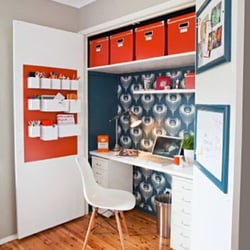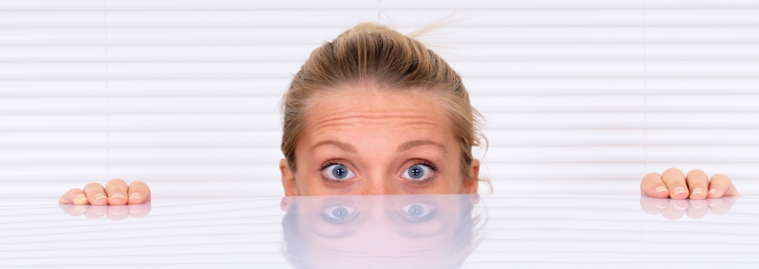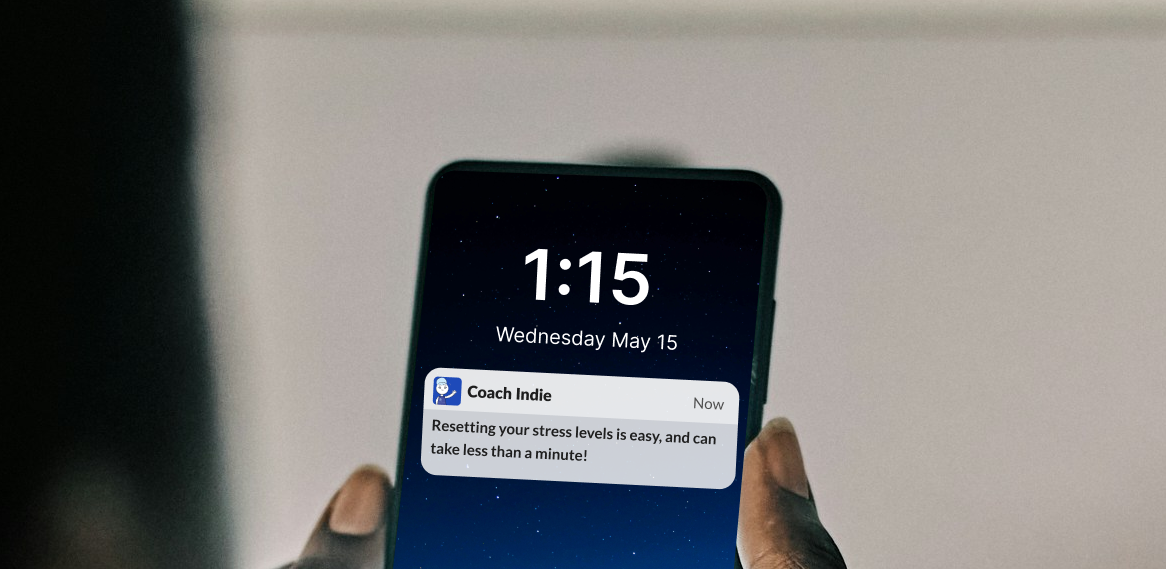A LinkedIn post I saw recently asked where people are working from right now. Many commented with living room, dining room, kitchen, balcony, garage and bedroom. I was quite taken by this. On one hand, their resilience is awesome. On the other, I’m wondering how this is impacting their wellbeing.
We’ve had some good news so far as to the containment of coronavirus here in Australia, but we’re still likely to be working from home for some time to come. Many of us are feeling the crunch trying to maintain a level of harmony in the home when our living spaces are serving so many opposing functions.
So, I reached out to Arwen Dropmann from Calm Space Professional Organising for some expert advice. She helps people declutter their home and life to reduce stress and improve wellbeing. Given the working conditions of many of us right now, it seemed the perfect time to get some advice on how to optimise makeshift work spaces at home.
Here’s what we’ve got in store for you:
-
How clutter affects wellbeing and productivity
-
4 principles for creating a calm, functional space
-
Tips for a workspace in a living area
-
Tips for a bedroom home office
-
Tips for a garage home office
-
Final thoughts
How clutter affects wellbeing and productivity
“Each item takes up a little bit of mental space and energy. Each item is linked to tasks, and home offices are usually full. So when you see that space full of items, you see tasks, and become overwhelmed.” says Dropmann.
“If flat surfaces are covered, then it becomes very hard to work. This clutter can create cognitive overload, causing stress, and affecting work and sleep.”
4 principles for creating a calm, functional space
Dropmann recommends the following to help you avoid overwhelm and stress from clutter, whether it be a makeshift workspace in your living room, or in a separate home office.
1. Don’t put it down, put it away
“Putting things off until later is the biggest source of clutter and overwhelm. Organising guru, Peter Walsh reminds us that ‘later is the best friend of clutter.’”
2. The 2 minute rule
“If you can do it in two minutes, then do it straight away. Block some time at the start and end of each day for the 2 minute rule to reduce distractions when you’re working.”
3. Keep like with like
“Tech with tech, stationery with stationery. Go back and decide where these categories are going to live, so you know where to find them. Give these items a home in that temporary work space.”
4. Flat surfaces for action, vertical for storage
“Flat surfaces are for activity or tasks, not for storage. Vertical surfaces are for storage (bookcases, shelves, cupboards). If you do have the option to store something, do it. Make it as easy as possible to support good habits”
Tips for a living area workspace

When it comes to working from your kitchen, dining or living room, “you need a system for how to clear that flat surface after the work day to become a functional living space again” says Dropmann.
“It’s about setting up the environment to support good habits.”
Here are Dropmann’s tips:
Look at what you are doing day to day
“Ask yourself, how can we get this space working better for what’s actually happening day to day? It’s a clue for how your space should be set up.”
Don’t wait for the situation to be perfect
“Some clutter is going to be unavoidable. You can’t let your space stop you from working. Keep working away at it bit by bit. It’s about progress, not perfection. If you aim for perfection, you’re not going to be happy.”
Office in a box
“Try using an office in a box - a box or tub for your books, stationery and devices you can pack up at the end of the day. It makes it easier to have your kitchen, dining or living room back when you need it.”
“If you don’t want to pack away your work in progress, put it on a tray or take a picture of your setup.”
Repurpose for storage
“Makeshift home offices don’t necessarily have the storage of an office environment. Think about what is good enough for now. This might be repurposing a cupboard in the kitchen or your daughter’s bookcase that’s not being used to make the space more functional for your needs right now.”
Dropmann also recommends repurposing a cupboard shelf for a hidden charging station or device storage for when you need to separate work and home life.
Sunday reset
“On Sunday afternoon, walk around, put something away, fix something that needs fixing, put a picture on the wall, clean up debris that piles up during the week to reset for Monday.”
“That way, those thoughts and tasks won’t continue to circulate around in your mind when you’re trying to work.”
Tips for a garage home office

It’s not motivating to work in a space that’s dark, dusty and smelly. Dropmann recommends upping your comfort level in any way you can to make the space more inviting.
“Think about your wellbeing. Fumigate, ventilate, get as much natural light in as you can. Bring in a nice chair, rug and table. Hang a picture, bring in a plant.”
“Go and get your party lights out - there are no rules here! People are Zooming at home, pets and kids are bursting in. The norm has changed and everyone is in the same boat.”
Tips for a bedroom home office

Source: Better Homes & Gardens
For a restful sleep, it’s important to associate your bedroom with sleep, not work. But if you’ve got no choice, Dropmann suggests:
“Don’t work on the bed… use an office in a box, or set up an office in the cupboard or wardrobe.”
“You might not want to pack up everyday, but for the good of your relationship, you might have to.”
Check out this tutorial for an office in a wardrobe. It might even force you to throw out those old clothes you haven’t worn for years!
Final thoughts
Working from home doesn’t have to be stressful. It can be a wonderful opportunity to be closer to loved ones. It can also help you to confront existing clutter issues to bring more calm and functionality to your home.
It’s essential to look at the needs of those in your home and find a way to make the space work for what you’re actually doing day to day. This can be hard right now. Remember, decluttering isn’t just putting things away, it’s about mindset and approaching a room or space with your wellbeing in mind. Something we could all use right now.
Understand and measure your stress in real-time with Indie by Pioneera.






